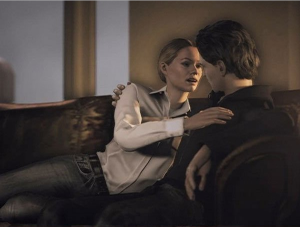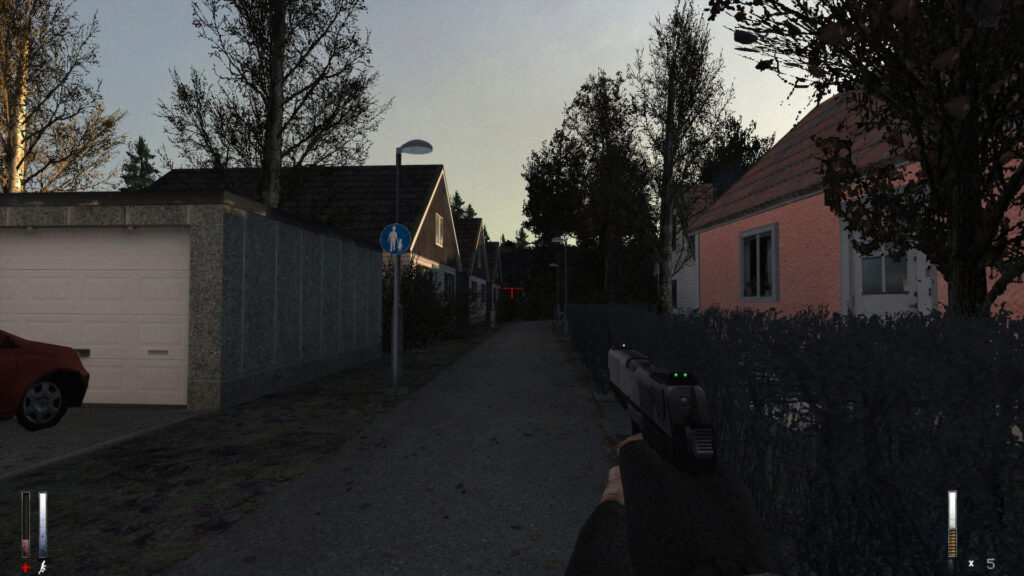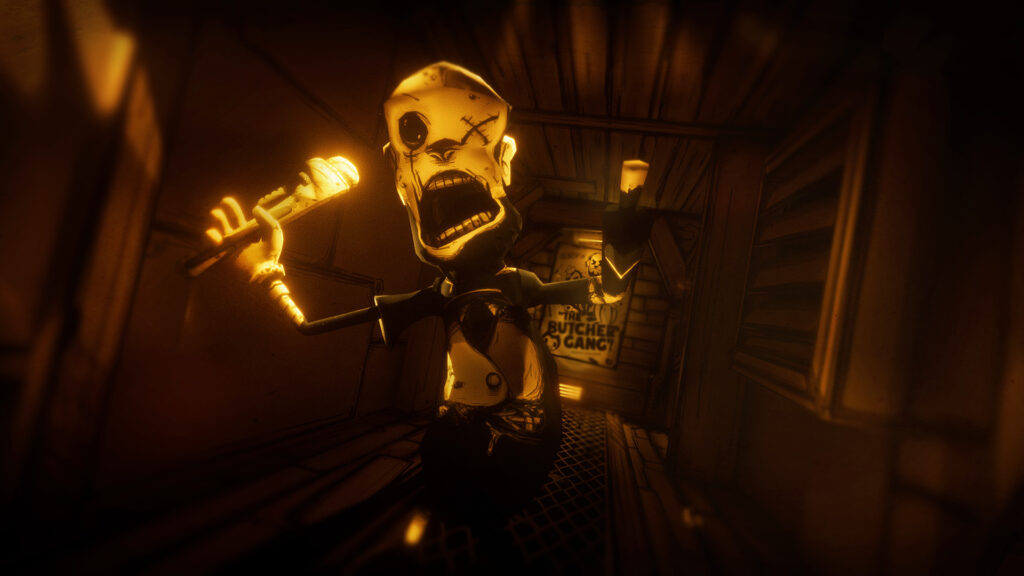For Halloween month, I’ve been looking forward to playing more horror games that I haven’t had a chance to look at it, especially after writing my book on horror design. While there are some clear winners from the indie space that I’ll be reviewing the second they are released, there are quite a lot that isn’t working for me, no matter how many of them have Youtuber “shocked” face compilations. I want to talk about where indie devs are trying to take shortcuts into scares, and why this doesn’t work when we compare it to some of the greats from now over 20 years old.
Getting Rid of “You”
One of the major aspects I see from a lot of indie horror is the removal of the protagonist in favor of “you” as the main character. Sometimes you are literally playing yourself, or you’re playing as a named character, but that character has no agency, personality, and maybe no voice lines outside of a few cutscenes.
There are several development reasons why this has become popular. By putting the main character as the player, you don’t need to worry about modeling a character or getting voice lines recorded, and the story itself does not need to take into account the character. What I mean by that last point is that many horror games in the past have the main character as part of the story progression — they are talking to other characters, they are describing what they need to do, and most importantly: they are reacting to the world around them.
A major aspect of horror in all mediums is being able to connect to the person in the situation. We either care about these characters because we want to see them survive, or we hate them and are waiting for them to be done in by whatever is the threat of the situation. Another detail for some games is that the main character is personally invested in what is happening, such as in the Silent Hill games or Alan Wake. Far too many indie horror games are played in the same scenario — a no-personality character exploring a place with no one around to interact with. This is the MO that we saw in titles like Gone Home and Amnesia, but the problem is that when there are no characters, there are no stakes. Not even the “monster” of the game matters much if it’s just something that follows the player until they find them and kill them. Having characters reference or talk to a nondescript character doesn’t add personality to them, such as Gordon Freeman.
As a quick aside, I wish we would see far more creative and more personality-driven monsters and creatures in horror games by now. Having given the first two Hellraisers a rewatch, as the antagonist in horror needs as much, or even more, personality than the protagonist. The environment also needs to have a sense of personality to it — it can’t just be a series of empty rooms in a dilapidated building. Good environmental design can lead to areas having their own personalities like Silent Hill or Ravenholm from Half-Life 2.

horror requires us to connect to the character, and the people, or monsters, around them
The difference between having the main character in the game and us as the main character is that we have one superpowered advantage compared to the characters in the game — we can turn it off at any time. There’s no need to wonder about the fate of the character, or any characters in the game. Without any connection, the game doesn’t feel like a scary story, but more of a haunted house. Speaking of, that takes me to the next point.
Jumpscare Factory
Stop me if you’ve heard this one before — you’re walking down a creepy hallway to pick up an item at the end of it. There’s lightning outside, no lights on, and the music is getting louder as you walk. You pick up the item and the music stops, and when you turn around something pops up and says boo, and then goes away. What I just described is a scenario that plays out in some shape or form in the majority of horror games.
One of the best/worst things to happen to horror in the last decade has been it getting picked up by YouTubers and streamers. This has led to horror games getting far more notoriety and reach than they would have otherwise and revitalizing the genre. Still, it has also led to a trend of these games being designed specifically for that audience, or should I say the person’s audience.
The reason why that monster says boo and then runs away? That’s to give the person a chance to make a “streamer shocked face” and then talk about it to their audience. Even in games where the creature does attack like in the Puppet Combo titles, the jumpscare is often so obnoxious and immediate that it’s less scary and more headache-inducing to me.
You can tell the difference between good and bad jumpscares. Bad ones feel like they were set up a mile away and are the game just going through the motions. The best ones happen organically — something happening where the player wasn’t expecting it to and completely throwing them off their game. There are examples of horror showing up in non-horror games and properties that do just that. This is often why games that downplay jumpscares in favor of one or two big ones are far scarier.

focusing only on jumpscares doesn’t make a game scary,
They are less predictable, the player is lulled into a false sense of security, and they will affect them when they least expect it. Good jumpscares are meant to elicit a reaction at the best time and force the player to do something “off-script” Even if the game tries to use procedural scares if they are still designed around the same conditionals to trigger them, or I know that X leads to a jumpscare, then I know to always expect it when I see it.
This is also why procedural generation and horror doesn’t automatically make things scary — there must be enough variance so that the player can’t predict the jumpscares and events to make it scary.
People tend to forget that jumpscares are about the buildup and release of tension — there must be a buildup for the jumpscare to work. If someone is getting hit one right after another with jumpscares, or they’re so predictable, the player is not going to feel anything other than the shock of the jumpscare and then they won’t be bothered by it again.
Limited Interactions
This next point should be familiar to everyone who has read a horror-related design post of mine in the last decade. Another aspect that grew with indie horror is the idea of non-combative situations. The player has no means of fighting back, no way of engaging with the enemy or enemies attacking them and being spotted often means death. In these games, you can just sense the hand of the designer always making sure the enemy is close by, as opposed to wandering around organically. Five Nights at Freddy’s and Amnesia are the two games that highlighted this style, and it has since been copied by a multitude of indie designers.
I have spoken at length in the past about “fight or flight” and how it relates to games. Removing any and all ability to “fight” doesn’t make a game scary; it makes it predictable. Part of horror is creating a tense situation, and no series in recent memory has done this part right more than the Souls games and trying to preserve a huge number of souls and make it to safety. When there is no mystery as to what will happen or what the player can do, a lot of the tension goes away.
This is why there is the whole “survival” aspect of survivor horror. The question isn’t “do I run or die?” but “do I fight and run out of ammo, or run away and try to preserve it?” Even if the player can’t directly fight the enemy, there should be more things they can do beyond just hiding behind an object or in a closet.

Cry of Fear does a good job of presenting the player with situations where they know something is wrong, but have no idea where the threat is coming from
When the player can fight but doesn’t know when it will happen, can present great moments of horror. In the game Cry of Fear, there are plenty of areas where nothing happens — the player is going around looking for items or trying to find a clue. They know they can fight, as the gun on the screen is there for a reason, but they don’t know when or where the next fight is coming from. Or instead of a fight, it’s a deranged man with a chainsaw coming to one-shot them.
I’m also a fan of horror and survival horror games that make combat feel “meaty”. You’re not supposed to be hacking and slashing but feel every swing of your weapon. Combat isn’t supposed to feel like a power fantasy but an act of desperation. This is why I like systems like Condemned or recently with Scorn, where the combat is there, but it is obviously not supposed to be the focus. As an aside, this was survival horror’s original version- a puzzle-heavy adventure game where you can also fight back. There is a difference between weighty combat and cumbersome combat that is too off-topic to get to here.
I’ve seen this comment from a lot of indie developers and fans who say that “combat ruins horror” and will point to games without combat as the best examples of horror design. I’ve argued against the opposite, if there are no interactions between the player, the world, and the enemies, around them, then you don’t have a horror game, you have a haunted house where you can’t touch anything.
Why Horror is Hard
I feel that a lot of designers and people who cover games don’t understand the difficulty of making a good horror game. Horror design is as much about pacing and gameplay as it is about psychology. Flickering the lights and going “booo” or showing tons of blood and gore doesn’t create horror. It is about the stuff that happens in between: the player desperately trying to find ammo or a weapon, wandering alone with only a few tools to aid them, and that strange noise they keep hearing from behind the walls.
It also means having a good eye when it comes to the pacing and structure of your game. If you make your game annoying to play, that right there will eliminate any horror you are trying to convey. I have played many indie horror games where low frames per second start to give me a headache, the lighting is horrible, or the controls and puzzles don’t make sense, and instead of any semblance of fear, I’m just annoyed with the game. Sometimes I get so frustrated with a game that I have honestly not responded to jumpscares because I was looking at chat or just completely removed from the game. The sense of fear has been replaced with a sense of anger.

Many designers today are trying to shortcut making a horror franchise, and working with the same predictable beats
It is about making us care for the characters on screen and their predicament, and this isn’t something you can take shortcuts or try to force. You can’t just have a character wander around for 8 hours randomly saying comments to themselves and have that as a study of good character development. Telling us that a character is scared or is trying to summon up the energy to go on is not the same as showing us through interactions with the world and other characters. Emotionless, which is different from silent, characters are the bane of horror, as well as one-note villains who are just there for trailer footage or a sizzle reel.
And one final point, horror is not always about punishing gameplay. I can’t help but feel that a lot of designers have been copying the brutal difficulty of the games from Puppet Combo with enemies who easily track the player, who can kill them quickly, solve annoying puzzles, and force the player to wander around trying to figure out what’s going on. Just as making your game hard doesn’t make it good, making a difficult game doesn’t mean it’s scary. Once the initial twist is out of the way about the difficulty and the goal, all that’s left for the player is the extreme, and often linear, challenge to win. When you are more focused on the route needed to win as opposed to the killer trying to get you, then the game has failed in the horror department.
For horror to work, it must effortlessly combine good characters, psychology, and gameplay into a single experience. While there are tons of horror games out there, only a sub of a sub-section of them nails that balance.
Can you think of hidden horror gems that manage to do horror right? Let me know in the comments
- If you enjoyed this story, consider joining the Game-Wisdom Discord channel. It’s open to everyone.
- If you want to learn more about horror design and psychology, be sure to pick up my book “Game Design Deep Dive Horror” available now.

